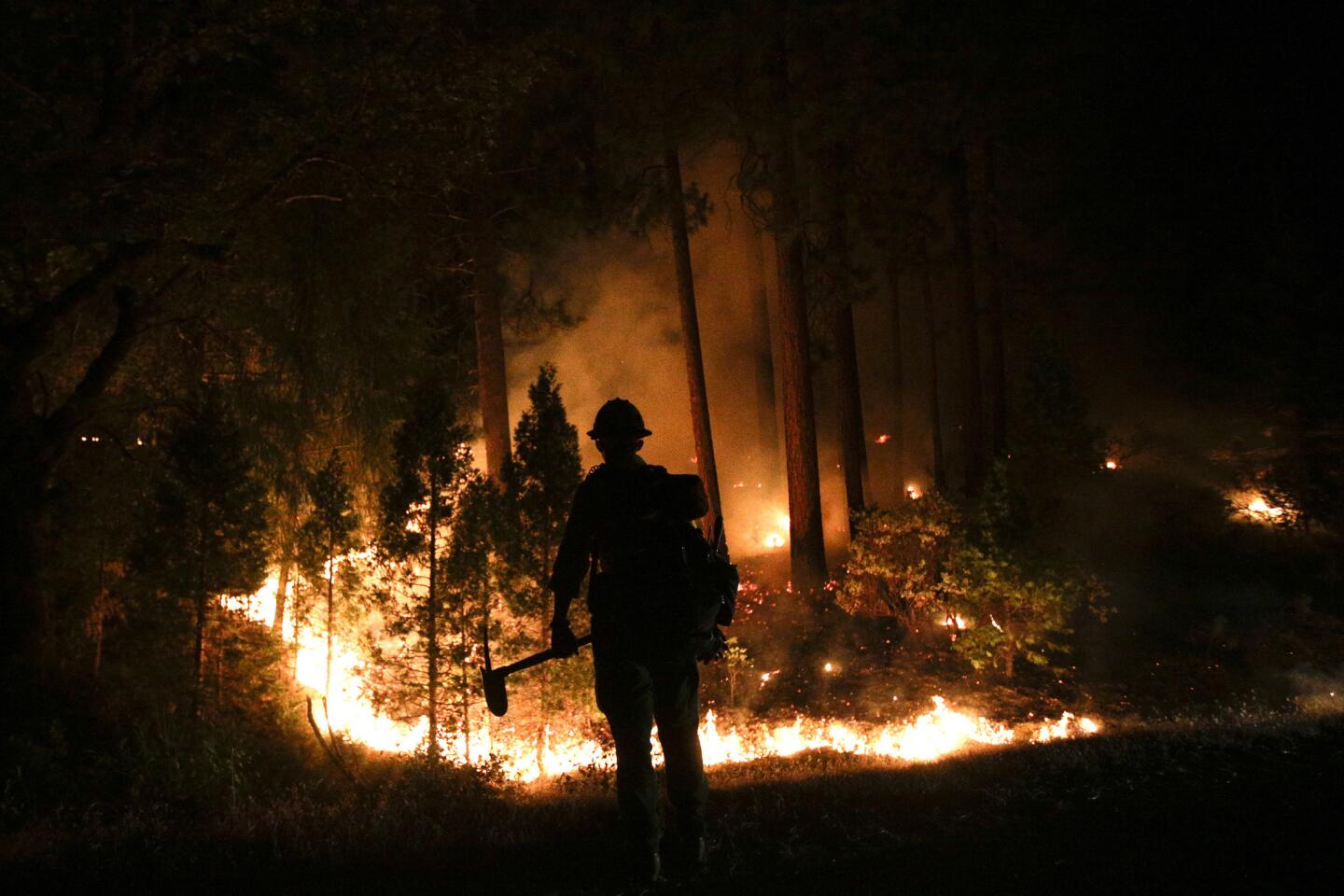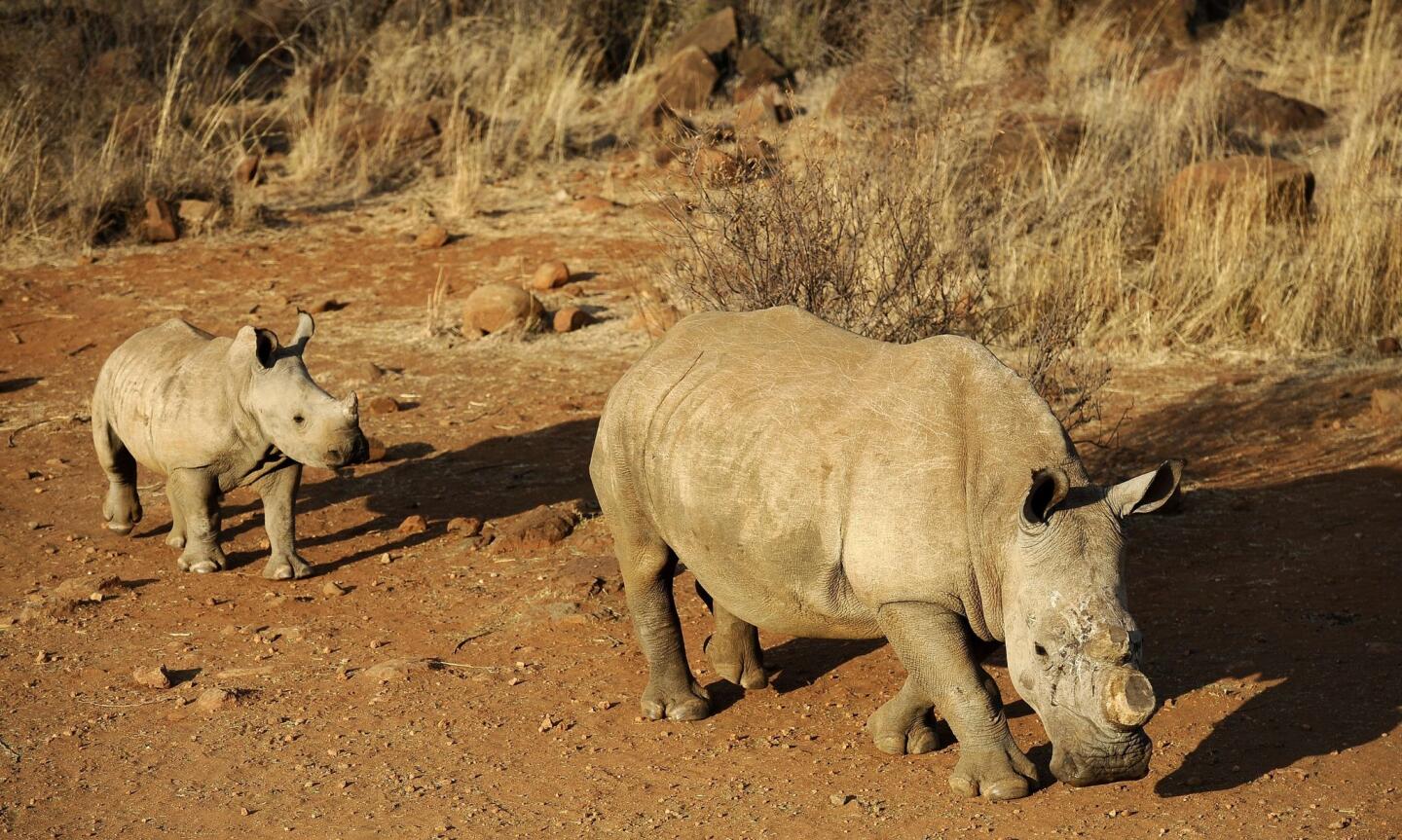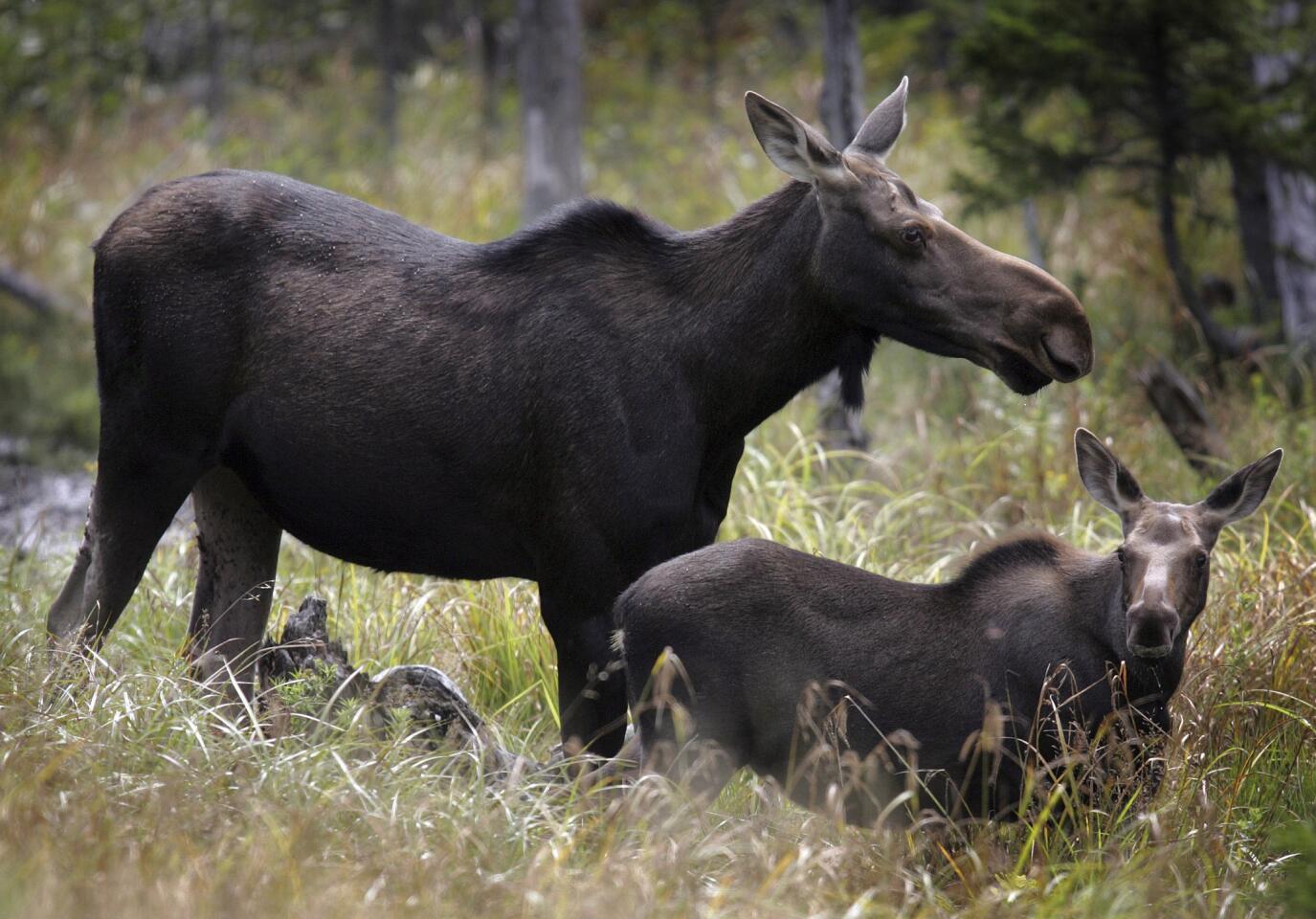Wilderness news of 2013: The good, the bad and the hopeful

The Rim fire destroyed more than a quarter of a million acres in the Stanislaus National Forest and parts of Yosemite National Park. It was started by a hunter’s illegal campfire; authorities have still not made an arrest or revealed the results of their investigation, even though the fire started in August. What gives?
Above: A firefighter watches the Rim fire burn near Yosemite National Park in August.
MORE YEAR IN REVIEW:
Ted Rall’s five best cartoons of 2013
Washington’s 5 biggest ‘fails’ of 2013
10 tips for a better life from The Times’ Op-Ed pages in 2013 (Jae C. Hong / Associated Press)
From California’s Rim fire to the discovery of 441 new species in the Amazon, 2013 was full of dramatic news -- sometimes uplifting, sometimes tragic -- for wilderness and the wildlife that dwells within. -- Karin Klein

The western black rhinoceros was declared extinct. According to Scientific American, by the mid-20th century hunting and industrial agriculture that reduced its range had caused its numbers to shrink. And then, starting in 1960, Mao Tse-tung’s call for a renewed emphasis on traditional Chinese medicine led to rampant poaching; powdered rhino horn was said to be a virtual panacea, including as a cure for cancer. Within 35 years, 98% of the remaining population was wiped out by poachers.
Above: A black rhinoceros that has been de-horned, followed by a calf, at the Bona Bona Game Reserve in South Africa in 2012.
MORE YEAR IN REVIEW:
Ted Rall’s five best cartoons of 2013
Washington’s 5 biggest ‘fails’ of 2013
10 tips for a better life from The Times’ Op-Ed pages in 2013 (Stephanie De Sakutin / AFP/Getty Images)

A vegetarian piranha. A monkey that purrs. Count them: 441 new plant and animal species have been discovered in the Amazon, according to an announcement this year by the World Wildlife Fund.
Above: A Caqueta titi monkey.
MORE YEAR IN REVIEW:
Ted Rall’s five best cartoons of 2013
Washington’s 5 biggest ‘fails’ of 2013
10 tips for a better life from The Times’ Op-Ed pages in 2013 (Javier Garcia / AFP / Getty Images)

U.S. moose populations are dropping precipitously, and though there are several theories about the main culprit -- worsening infestations of ticks and other parasites, heat stress or pine beetles that damage its habitat, the northern forests -- all are linked to climate change.
Above: Moose in Franconia, N.H.
MORE YEAR IN REVIEW:
Ted Rall’s five best cartoons of 2013
Washington’s 5 biggest ‘fails’ of 2013
10 tips for a better life from The Times’ Op-Ed pages in 2013 (Jim Cole / Associated Press)
Advertisement

A new study found that coral reefs are better at resisting the ravages of climate change than scientists had thought. Earlier reports had forecast that the reefs could be gone by mid-century. The newer study found that the reefs adapt somewhat to the changed conditions. But the news is only partly good -- that means that the reefs will probably be around until the end of the century, and only if there are reductions in carbon dioxide levels.
Above: A coral reef.
MORE YEAR IN REVIEW:
Ted Rall’s five best cartoons of 2013
Washington’s 5 biggest ‘fails’ of 2013
10 tips for a better life from The Times’ Op-Ed pages in 2013 (Karen Hissmann / Associated Press)







